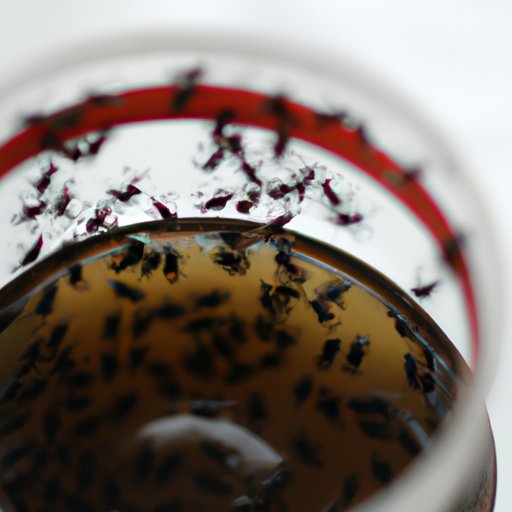
Introduction
Flies are a common nuisance that most people have had to deal with at some point in their lives. They can be annoying and difficult to catch, which is why we have put together this comprehensive guide on catching flies. This article will provide tips and tricks on how to catch flies using various tools and natural remedies.
Science behind the behavior of flies
Flies are hard to catch due to their quick reflexes and superior eyesight. They have a compound eye that allows them to detect movement and light at a much faster rate than humans. Flies also have the ability to fly at a high speed and change direction quickly, making it difficult to catch them. Finally, their small size makes them incredibly agile and hard to grasp.
Step-by-step guide on catching flies using different tools
There are several tools you can use to catch flies. The most common ones are fly swatters, sticky traps, and homemade traps.
Fly swatters
When choosing a fly swatter, make sure it is lightweight and easy to maneuver. Look for swatters with wire mesh or plastic grid as they are more effective in killing flies. To use a fly swatter, approach the fly from behind and strike downwards with a quick flick of the wrist. Repeat the motion until you have successfully caught the fly.
Sticky traps
Sticky traps come in various forms, such as strips or cards and can be purchased at most home improvement stores. Hang the card near the area where the fly is most active and wait for the fly to land on it. Once it lands, it will get stuck to the sticky surface and be unable to escape. To dispose of the trap, wear gloves and carefully remove the entire trap, then wrap it in a plastic bag and dispose of it in the trash.
Homemade traps
There are many effective and low-cost homemade traps you can create. One simple trap involves filling a bowl with sugar water and dish soap. Flies are attracted to the sweet smell of sugar and will dive into the solution, but the soap will make it difficult for them to escape. Another option is to create a funnel trap using a plastic bottle and placing bait at the bottom inside, then cutting a hole in the side for the fly to enter. The fly will be unable to exit due to the shape of the funnel.
The best location to set up these traps for maximum effectiveness
Flies are most active in areas where there is food and moisture. Kitchens, garbage cans or pet areas are ideal locations to set up traps. Place traps in areas where they will not be disturbed, such as on top of shelves or in corners.
Tips on anticipating the movements of flies
Observing the flight patterns of flies can help you anticipate their movements. Flies tend to fly in a straight line for a few seconds before banking one direction or the other. Use this information to position yourself and your tools to maximize the chances of catching the fly.
Utilizing their attraction to light to lure them into a trap
Flies are attracted to bright colors and light. Use this to your advantage by placing bright lights near your trap. You can also use a flashlight to direct them into the trap.
Identifying common areas where flies tend to gather
Flies are common in areas where food and moisture are present. This includes garbage cans, pet areas, and kitchens. By identifying areas where flies tend to gather, you can focus your efforts on these areas.
Natural remedies to catch flies
There are several natural remedies you can use to catch flies, including essential oils, vinegar, and herbs/plants.
Essential oils
Flies are repelled by certain essential oils, such as lemongrass, lavender, and peppermint oil. To use, mix a few drops of the oil with water in a spray bottle and spray in areas where flies are present.
Vinegar
Vinegar is great for trapping flies as they are attracted to the smell of fermenting food. To create a vinegar trap, fill a jar with apple cider vinegar and a few drops of dish soap. Flies will be attracted to the smell, but the soap will make it difficult for them to escape.
Herbs and plants that are repellant to flies
Plants such as basil, bay leaves, and mint are natural fly repellents. Place potted herbs or plants in areas where flies are present to keep them at bay.
Types of plants that attract and repel flies
Some plants, such as marigolds, attract beneficial insects that prey on flies. Other plants, such as carnivorous plants like Venus flytraps, trap and eat flies.
Myths and superstitions around catching flies
There are many myths and superstitions surrounding catching flies, such as the belief that hanging a bag filled with water will repel flies. However, there is little scientific evidence to support these claims. Stick to the tips and methods outlined in this article for the most effective method of catching flies.
Conclusion
Catching flies can be a frustrating experience, but with the tips and methods outlined in this article, you’ll be able to catch them in no time. Remember to observe their flight patterns, utilize natural remedies, and position your traps strategically. By following these tips, you can effectively get rid of pesky flies.





